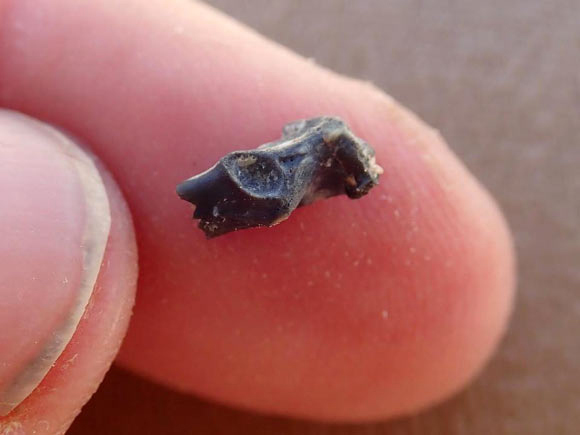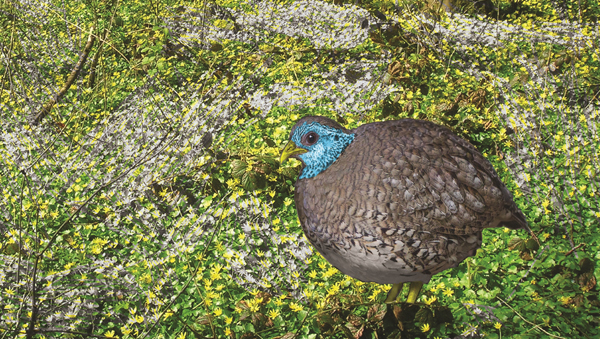Tiny Partial Shoulder Girdle Bone Fills 15 Million-year Fossil Gap
A tiny, partial bone from the left shoulder girdle of an ancient bird discovered in Utah, has helped fill a gap in the fossil record of the early relatives of chickens and turkeys (Galliformes). In addition, the fossil specimen named UMNH.VP.30891, from the Eocene Uinta Formation shares a number of anatomical traits with fossils found in Uzbekistan and Namibia which suggests the ancestors of chickens, turkeys, quail, pheasants and guineafowl, were widespread.
A Tiny Bone from a Bird
This fossil bird has been assigned to the Paraortygidae, an extinct group of birds that were the ancestors of modern game birds. The tiny fossil fits in a nearly 15-million-year gap in the fossil record of the galliform lineage in North America.
The Tiny Fossil Bone from the Left Shoulder Girdle of an Unnamed Member of the Paraortygidae
Picture credit: Patricia Holroyd (University of California)
Bird Fossil from Utah
Writing in the academic journal Diversity, the researchers, which included scientists from the Chinese Academy of Sciences along with colleagues from Midwestern University (Arizona) and the Museum of Paleontology (University of California), describe the tiny fossil bone which was found in 44-million-year-old fluvial deposits in north-eastern Utah.
Commenting on the importance of this tiny fossil, which measures less than one centimetre in length, one of the co-authors of the paper, Dr Beth Townsend (Midwestern University), stated:
“The new Uinta bird fills not only a time gap, but also helps us better understand the animal community at this time. The Uinta Basin is important for understanding ecosystems during times of global warm temperatures, when forests, primates and early horses were spread across an area that is now desert.”
A Life Reconstruction of the Uinta Bird
Picture credit: Thomas Stidham (Chinese Academy of Sciences)
Fossil Coracoid Representing the “Uintan paraortygid”
The fossil coracoid represents a new species, but it has yet to be named. It has been informally termed the “Uintan paraortygid”. This quail-sized bird from Utah is the oldest known member of the Paraortygidae. It is approximately the same body size and shape of other early paraortygids and given their widespread distribution in the fossil record (Namibia, Uzbekistan and the United States), it suggests that these little birds were confident, capable fliers. In addition, it seems likely that these birds had a flexible biology or diet that allowed them to occupy a diversity of habitats from forests and coasts to semi-arid savannahs.
The scientific paper: “Evidence for Wide Dispersal in a Stem Galliform Clade from a New Small-sized Middle Eocene Pangalliform (Aves: Paraortygidae) from the Uinta Basin of Utah (USA)” by Thomas A. Stidham, K. E. Beth Townsend, and Patricia A. Holroyd published in Diversity.
The user-friendly Everything Dinosaur website: Everything Dinosaur.









Leave A Comment